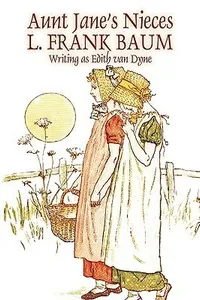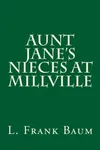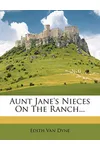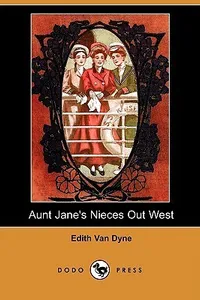Step into the charming world of Aunt Jane’s Nieces, where three spirited cousins navigate adventure, romance, and early 20th-century life with wit and heart! Written by L. Frank Baum under the pseudonym Edith Van Dyne, this delightful young adult series of ten novels, published between 1906 and 1915, offers a refreshing departure from Baum’s fantastical Oz books, blending humor, social commentary, and coming-of-age tales that captivated teen girls of the era.
Unlike the magical lands of Oz, Aunt Jane’s Nieces grounds itself in the real-world adventures of Louise Merrick, Beth De Graf, and Patsy Doyle, three cousins brought together by their wealthy, cantankerous Aunt Jane. With its relatable characters and engaging plots, the series feels like a cozy chat with old friends, making it a hidden gem for fans of historical fiction and classic young adult literature.
How Aunt Jane’s Nieces Began
In 1906, L. Frank Baum, already famous for The Wonderful Wizard of Oz, was tasked by his publisher, Reilly & Britton, to create a series for young girls in the style of Louisa May Alcott’s Little Women—but, as his contract cheekily noted, “not so good.” Writing as Edith Van Dyne, Baum crafted Aunt Jane’s Nieces, blending his knack for storytelling with a focus on strong, independent female characters. Inspired by his advocacy for women’s suffrage and influenced by his mother-in-law, activist Matilda Joslyn Gage, Baum infused the series with progressive themes for its time.
The Heart of Aunt Jane’s Nieces
The series kicks off with Aunt Jane’s Nieces (1906), where the dying Jane Merrick summons her three nieces to her estate to choose an heir. Louise, the social climber, Beth, the blunt dreamer, and Patsy, the fiery redhead, clash and bond in a tale of rivalry and redemption. Aunt Jane’s Nieces Abroad (1907) takes the trio to Europe, dodging volcanic eruptions and Sicilian brigands, while Aunt Jane’s Nieces at Work (1909) sees them dive into political campaigning, showcasing Baum’s suffrage support. Aunt Jane’s Nieces Out West (1914) explores the budding Hollywood film industry, blending mystery with early cinema glamour.
The series shines through its themes of resilience, sisterhood, and personal growth, set against the backdrop of early 20th-century America. Baum’s heroines are far from perfect—Patsy’s stubbornness, Louise’s scheming, and Beth’s bitterness add depth, proving girls can be complex and capable. The novels mix lighthearted adventure with subtle critiques of wealth, privilege, and gender roles, all wrapped in Baum’s warm, accessible prose. From New York’s high society to California’s deserts, the settings ground the stories in a vibrant historical context.
Why Aunt Jane’s Nieces Resonates
Aunt Jane’s Nieces was a hit with young readers, rivaling the Oz books’ popularity among teens and spawning nine sequels. Its progressive portrayal of women—independent, flawed, and often the rescuers rather than the rescued—set it apart in an era when women’s rights were gaining traction. Today, the series remains a charming snapshot of its time, appealing to readers who love historical fiction or seek lesser-known classics. Its blend of humor, heart, and social insight keeps it relevant, even if it lacks the fame of Baum’s Oz legacy.
- Publication Years: 1906–1915
- Number of Books: 10
- Target Audience: Teenage girls
- Author: L. Frank Baum (as Edith Van Dyne)
Dust off Aunt Jane’s Nieces and dive into a world of spunky heroines and timeless adventures—perfect for cozy evenings with a classic!









